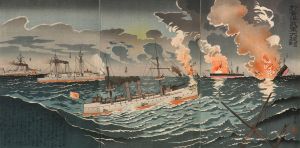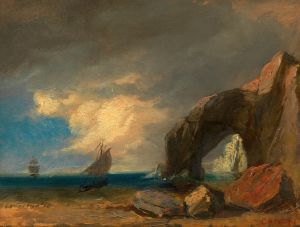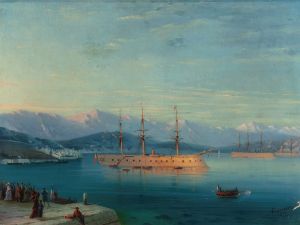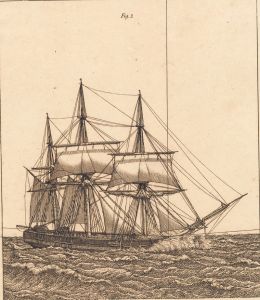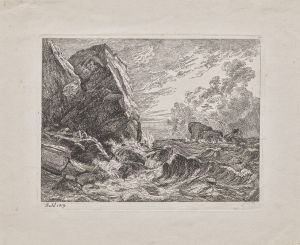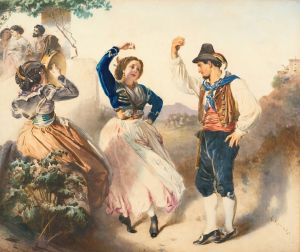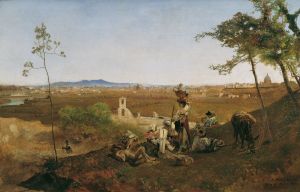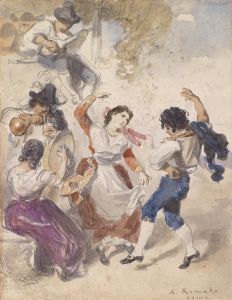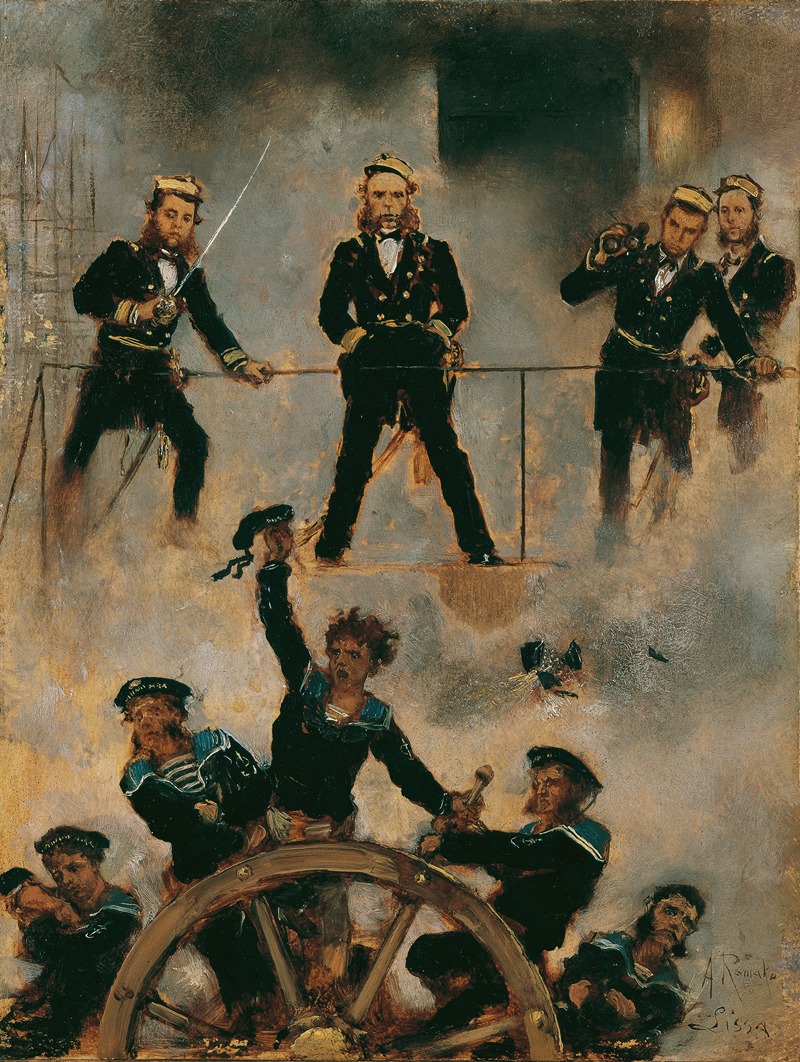
Tegetthoff in der Seeschlacht bei Lissa II
A hand-painted replica of Anton Romako’s masterpiece Tegetthoff in der Seeschlacht bei Lissa II, meticulously crafted by professional artists to capture the true essence of the original. Each piece is created with museum-quality canvas and rare mineral pigments, carefully painted by experienced artists with delicate brushstrokes and rich, layered colors to perfectly recreate the texture of the original artwork. Unlike machine-printed reproductions, this hand-painted version brings the painting to life, infused with the artist’s emotions and skill in every stroke. Whether for personal collection or home decoration, it instantly elevates the artistic atmosphere of any space.
"Tegetthoff in der Seeschlacht bei Lissa II" (translated as "Tegetthoff in the Naval Battle of Lissa II") is a painting by Austrian artist Anton Romako. Created in 1880, the work depicts a dramatic moment from the Battle of Lissa, a significant naval engagement that took place on July 20, 1866, during the Austro-Prussian War. The battle occurred near the island of Vis (Lissa in Italian) in the Adriatic Sea and was fought between the Austrian Empire and the Kingdom of Italy. It is historically notable as one of the first major naval battles involving ironclad warships.
The painting centers on Rear Admiral Wilhelm von Tegetthoff, the commander of the Austrian fleet, who played a pivotal role in the Austrian victory. Tegetthoff is portrayed on the deck of his flagship, the SMS Erzherzog Ferdinand Max, leading his forces with determination and resolve. The scene captures the chaos and intensity of naval warfare, with smoke, cannon fire, and the close-quarters combat that characterized the battle. The painting emphasizes the heroism and leadership of Tegetthoff, who employed innovative tactics, including ramming enemy ships, to overcome the numerically superior Italian fleet.
Anton Romako's style in this painting is marked by its emotional intensity and dramatic composition. Unlike the more traditional, idealized depictions of historical events common in the 19th century, Romako's work conveys a sense of immediacy and human vulnerability. The figures in the painting are rendered with expressive detail, highlighting the tension and peril faced by the sailors.
The Battle of Lissa was a significant event in naval history, as it demonstrated the effectiveness of ironclad ships and ramming tactics in modern warfare. Tegetthoff's leadership during the battle earned him widespread acclaim and solidified his place as a national hero in Austria. Romako's painting, however, was not immediately well-received. His unconventional style was considered avant-garde for its time, and it was only later that his work gained recognition for its emotional depth and historical significance.
Today, "Tegetthoff in der Seeschlacht bei Lissa II" is regarded as an important example of Austrian historical painting. It is housed in the Heeresgeschichtliches Museum (Museum of Military History) in Vienna, Austria, where it remains a key piece in the museum's collection, offering insight into both the historical event it depicts and the artistic innovations of Anton Romako.





